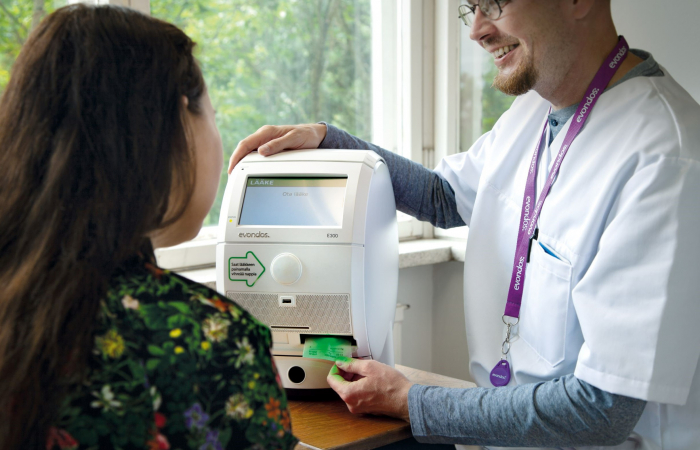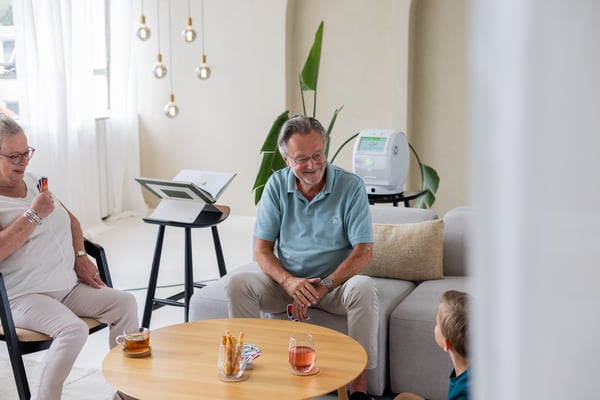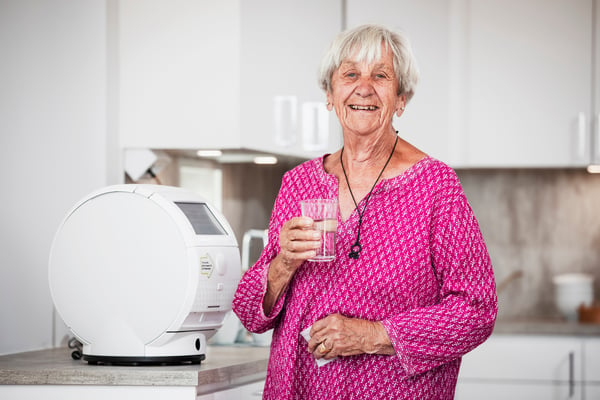
Based on the feedback from our customers, Evondos has launched a new version of Assisted dispensing. Improvements have been done around usability, and it now enables also care assistants to help with medication. Our Service Specialist Lene Dahler explains why Assisted mode feature was developed and how it benefits stakeholders.
Why was Assisted dispensing feature developed?
Medication errors injure thousands of people every year and cause a lot of unnecessary hospitalizations. Despite numerous efforts to increase patient safety, errors in medication management are increasing.
Manual medication management requires skill, comprehensive safety routines and good communication, but all of these suffer if there is a shortage of care personnel and time. Unfortunately, that is the situation for many care providers today. As the number of tasks and patients is increasing, middle-level managers report that they find themselves having to prioritize between patient safety and productivity.
This is particularly challenging in Assisted living facilities, where residents are often extra vulnerable if they are old, have many illnesses, and use many medications.
Safety routines may be in place, but if the organization is understaffed, caregivers might be forced to take shortcuts. I’ve talked to nurses who are constantly anxious at work because of a high workload combined with the responsibility they undertake when administering medicines. Can you imagine being responsible for 30 patients, each of whom has 5-10 medicines that must be prepared several times a day? And on top of that, you are likely to be interrupted several times during your shift. You are not in a good place then. Tired care workers can cause serious problems for a care organization.
The assisted mode was developed to help care organizations overcome these challenges. Using Evondos medicine dispensing robots minimizes risk and reduces the amount of non-clinical tasks, allowing nurses to concentrate on tasks pertinent to their primary duties.
What does this mean for the care organization, to the nurse and to the end-user?
Using our medicine dispensing robot in Assisted mode has many benefits, also for the clients, even if they are not able to take the medication themselves. They can be 100% sure that their medication is not mixed up with someone else’s, and that they get the right dose at the right time. Electronic documentation of events helps the management monitor the quality of medication administration.
Improvements in assisted dispensing make it easier to utilize Care Assistants with medication management. There is now a new Assistant role in the Evondos system, allowing the medicine to be dispensed only in the correct time window. In most countries, healthcare managers can delegate medication administration to non-licensed staff. Provided that they receive training to ensure that medication administration is conducted according to regulations.
For care providers, this means better resource management and being able to provide safety for staff and clients. Customers who have already used Assisted dispensing for several years tell us that their clients are healthier, and sleep better at night. In some cases, this even reduces the need for assistance with other daily tasks.
Using Evondos Assisted dispensing also means taking better care of our healthcare workers to keep the ones we have and attract the ones we need in the future.
How do you enable the Assisted dispensing feature?
This feature is already available for all our E300 medicine dispensing robot users. Most clients who use E300 take the medication themselves, but the caregiver can change this setting to “Assisted dispensing” under the client’s Medication settings in the Telecare system. For some clients, assisted dispensing could be a temporary solution, whereas for others it can be the selected mode from the start.
What if the client is away for a couple of days?
If the client is going away, their caregiver can deliver the sachets needed during the time the client is away. If the caregiver uses Travel mode, automatic reminders are activated in the Telecare. The client will get a phone call or SMS when it is time to take the medicine. The care organization can also give relatives, or other connected persons, access to dispensing sachets ahead with the Travel mode feature.

Lene Dahler
Service Specialist
Evondos






